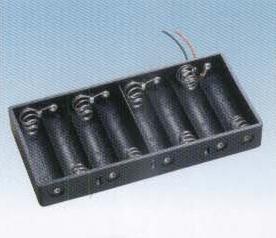- Mon Mar 25, 2013 8:11 am
#157398
Hello, and nice forum!
I'm new to the Arduino and electronics in general... and at this point the only experience I have is completing a SparkFun Starter kit... so please excuse my lack of knowledge.
so please excuse my lack of knowledge.
Basically, I want to control a valve with my Arduino for a science project I'm working on with my sons. Here are the specs on the valve:
Voltage Range: 0-10 vdc
Power Consumption: 1.9 watts, 2.3 watts max
Response Time: 3 to 5 ms
Circuit:
Does anyone know of some examples or tutorials for a similar solenoid operation? (most solenoid examples I've found are for simply turning the valve ON or OFF, and this is not what I want) I would like to proportionally open and close the valve with a Potentiometer I have... If that will even work.
Power:
I want to power the valve with a battery... and weight is my biggest concern. I only need to power the valve for 1 minute or less.
Does anyone have any suggestions for a lightweight battery setup for the valve in question?
Should I use a separate battery for the arduino?
Any pointers would be appreciated. I understand more learning is ideal and I certainly plan to keep it up... but I'm also anxious to get the valve at least working.
I'm new to the Arduino and electronics in general... and at this point the only experience I have is completing a SparkFun Starter kit...
Basically, I want to control a valve with my Arduino for a science project I'm working on with my sons. Here are the specs on the valve:
Voltage Range: 0-10 vdc
Power Consumption: 1.9 watts, 2.3 watts max
Response Time: 3 to 5 ms
Circuit:
Does anyone know of some examples or tutorials for a similar solenoid operation? (most solenoid examples I've found are for simply turning the valve ON or OFF, and this is not what I want) I would like to proportionally open and close the valve with a Potentiometer I have... If that will even work.
Power:
I want to power the valve with a battery... and weight is my biggest concern. I only need to power the valve for 1 minute or less.
Does anyone have any suggestions for a lightweight battery setup for the valve in question?
Should I use a separate battery for the arduino?
Any pointers would be appreciated. I understand more learning is ideal and I certainly plan to keep it up... but I'm also anxious to get the valve at least working.
Last edited by SourcePatrol on Mon Mar 25, 2013 1:34 pm, edited 1 time in total.

